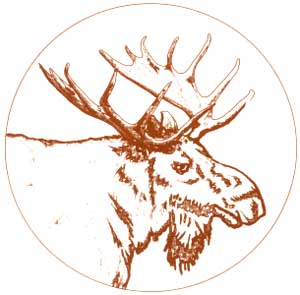
|
Geological Survey Bulletin 1309
The Geologic Story of Isle Royale National Park |
INTRODUCTION
THE GEOLOGIC STORY OF ISLE ROYALE NATIONAL PARK
By N. KING HUBER
Isle Royale is an outstanding example of relatively undisturbed northwoods lake wilderness. But more than simple preservation of such an environment is involved in its inclusion in our National Park System. Its isolation from the mainland provides an almost untouched laboratory for research in the natural sciences, especially those studies whose very nature depends upon such isolation.
One excellent example of such research is the intensive study of the predator-prey relationship of the timber wolf and moose, long sponsored by the National Park Service and Purdue University. In probably no other place in North America are the necessary ecological conditions for such a study so admirably fulfilled as on Isle Royale. The development of a natural laboratory with such conditions is ultimately dependent upon geologic processes and events that although not unique in themselves, produced in their interplay a unique result, the island archipelago as we know it today, with its hills and valleys, swamps and bogs—the ecological framework of the plant and animal world.
Even the most casual visitor can hardly fail to be struck by the fiordlike nature of many of the bays, the chains of fringing islands, the ridge-and-valley topography, and the linear nature of all these features. The distinctive topography of the archipelago is, of course, only the latest manifestation of geologic processes in operation since time immemorial. Fragments of geologic history going back over a billion years can be read from the rocks of the island, and with additional data from other parts of the Lake Superior region, we can fill in some of the story of Isle Royale. After more than a hundred years of study by man, the story is still incomplete. But then, geologic stories are seldom complete, and what we do know allows a deeper appreciation of one of our most naturally preserved parks and whets our curiosity about the missing fragments.
|
To describe a biota there is no substitute for a sample. But it is logical to ask, what might one want to know which would require the preservation of a sample? Whether such a question is asked at all is a reflection of the stage of intellectual maturity of a civilization. We take it for granted that there is some social gain in the erection and maintenance of a museum of fine arts, a museum of natural history, or even a historical museum. Sooner or later we ought to be mature enough to extend this concept to another kind of museum, one which you might call the museum of land types, consisting of samples as uninfluenced as possible by man. Luna Leopold, "The Meaning of Wilderness to Science," 1960: San Francisco Sierra Club, p. 33. |
| <<< Previous | <<< Contents >>> | Next >>> |
bul/1309/intro.htm
Last Updated: 28-Mar-2006
